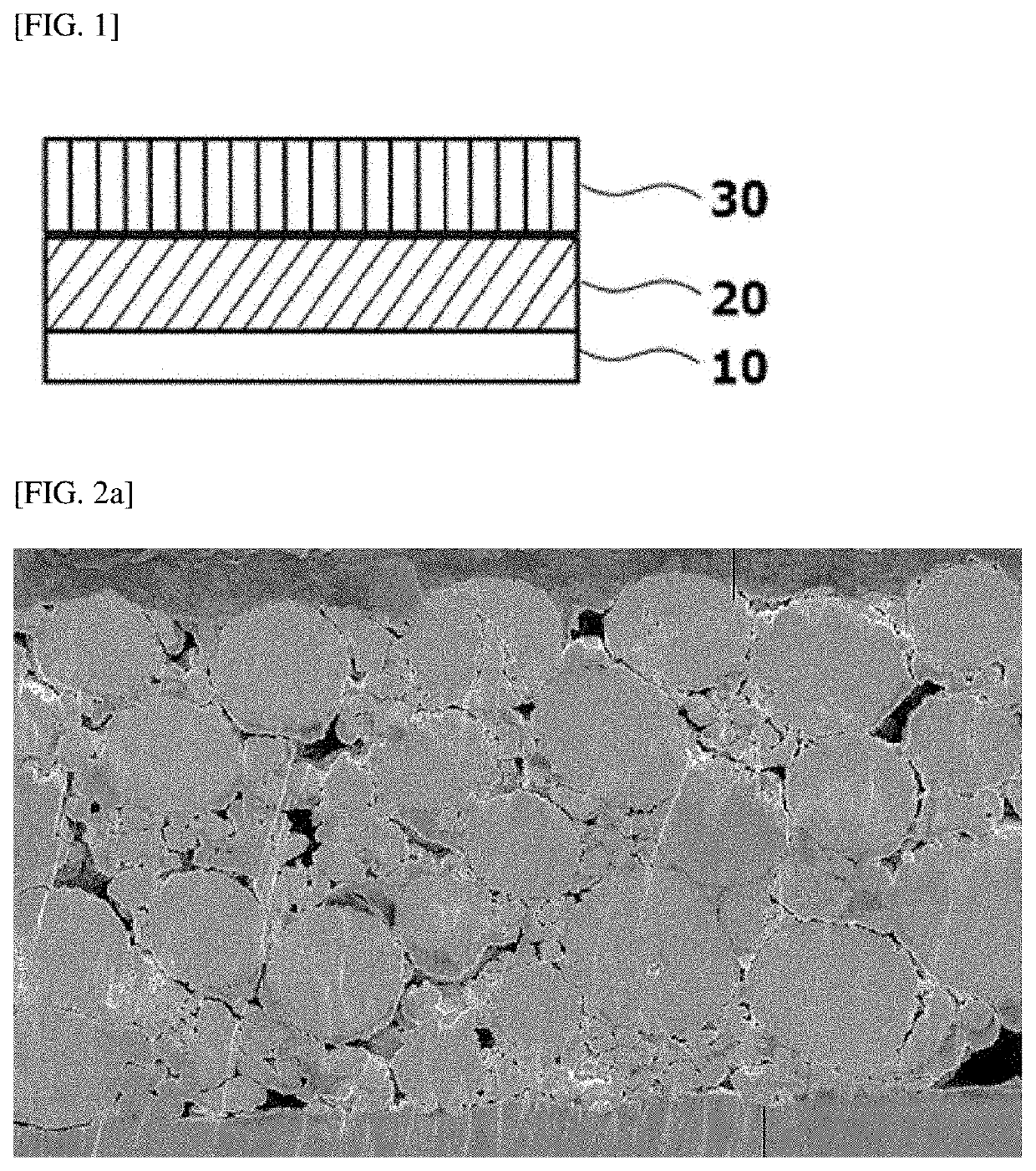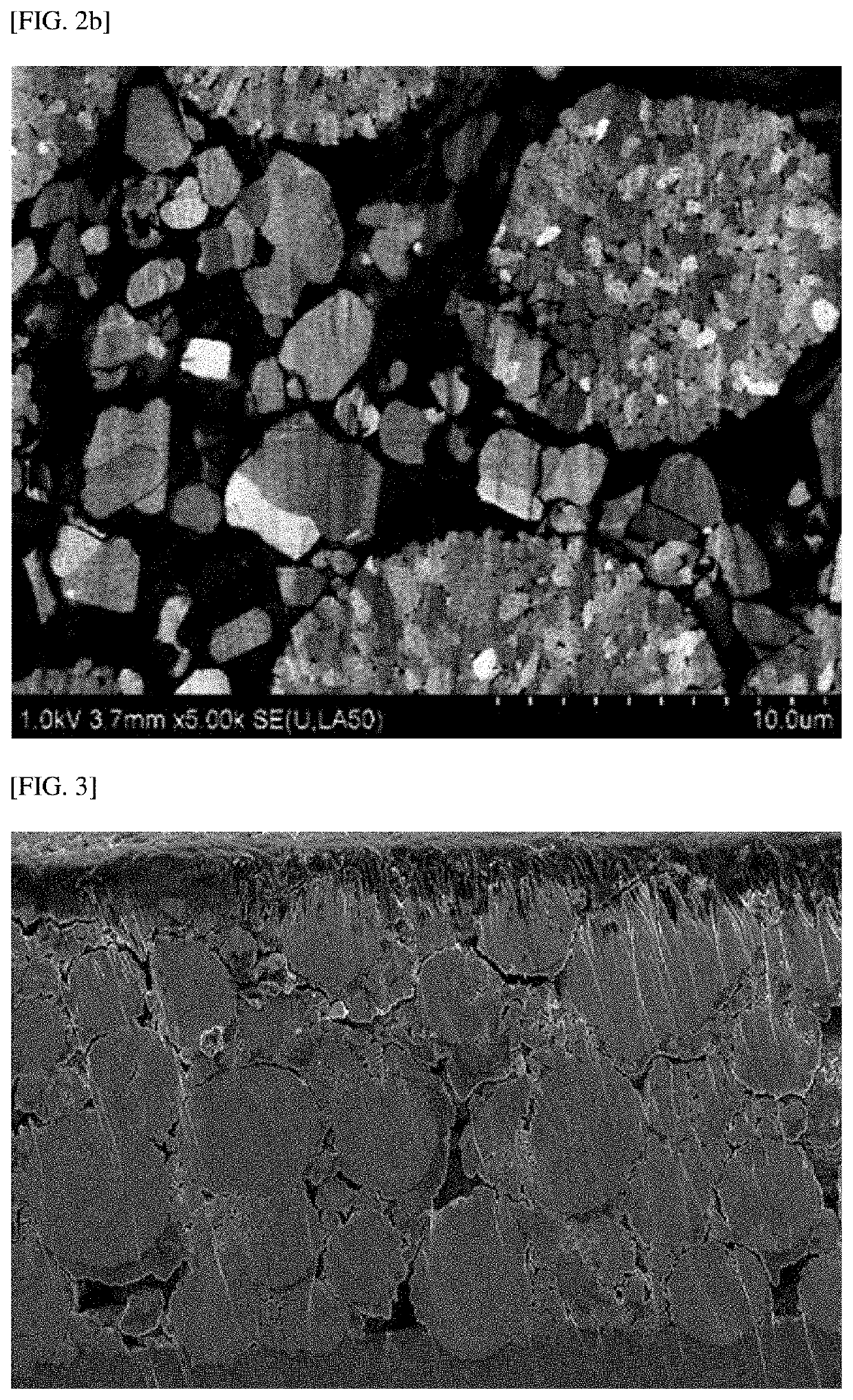Positive Electrode for Lithium Secondary Battery and Lithium Secondary Battery Including the Same
- Summary
- Abstract
- Description
- Claims
- Application Information
AI Technical Summary
Benefits of technology
Problems solved by technology
Method used
Image
Examples
example 1
[0098]Li1.02Ni0.80Co0.10Mn0.1O2, which has an average particle diameter (D50) of 15 μm and is in the form of a secondary particle formed by agglomerating primary particles (average particle diameter: 1.5 m) having crystalline grains with a size of 120 nm to 150 nm, as a first positive electrode active material and Li1.04Ni0.80Co0.10Mn0.1O2, which has an average particle diameter (D50) of 6 μm and is in the form of a single particle formed of at most ten primary particles having crystalline grains with a size of 150 nm to 200 nm, as a second positive electrode active material were mixed in a weight ratio of 80:20, and the resulting mixture was used as a positive electrode material.
[0099]Meanwhile, the mixed positive electrode material, carbon nanotubes as a conductive material, and polyvinylidene fluoride (PVDF, KF1100) as a binder were mixed in a weight ratio of 97.5:1:1.5, and the resulting mixture was added to an N-methyl pyrrolidone (NMP) solvent to prepare a composition for form...
example 2
[0101]A positive electrode was manufactured in the same manner as in Example 1 except that a 10 μm-thick carbon nanotube coating layer was formed on a surface of a positive electrode active material layer by adjusting an interval between a coating device and a current collector.
experimental example 1
ence of Cracking During Roll Pressing
[0111]The positive electrodes manufactured in Examples 1 and 2 and Comparative Examples 1 to 5 were roll-pressed with a rolling force of 1,600 kgf / cm2, and then characteristics thereof were confirmed using a scanning electron microscope.
[0112]FIGS. 2A and 2B are scanning electron microscope (SEM) images of the cross section of particles after the positive electrode manufactured in Example 1 was roll-pressed with the above-described rolling force, and FIGS. 3, 4, and 6 to 8 are SEM images of the cross section of particles after the positive electrodes manufactured in Example 2 and Comparative Examples 1 and 3 to 5 were roll-pressed with the above-described rolling force, respectively. Also, FIGS. 5A and 5B are SEM images of the surface of the positive electrodes manufactured in Example 1 and Comparative Example 2, respectively.
[0113]First, referring to FIGS. 2A, 2B, and 3, it can be seen that even when the positive electrodes manufactured in Examp...
PUM
 Login to View More
Login to View More Abstract
Description
Claims
Application Information
 Login to View More
Login to View More - R&D
- Intellectual Property
- Life Sciences
- Materials
- Tech Scout
- Unparalleled Data Quality
- Higher Quality Content
- 60% Fewer Hallucinations
Browse by: Latest US Patents, China's latest patents, Technical Efficacy Thesaurus, Application Domain, Technology Topic, Popular Technical Reports.
© 2025 PatSnap. All rights reserved.Legal|Privacy policy|Modern Slavery Act Transparency Statement|Sitemap|About US| Contact US: help@patsnap.com



